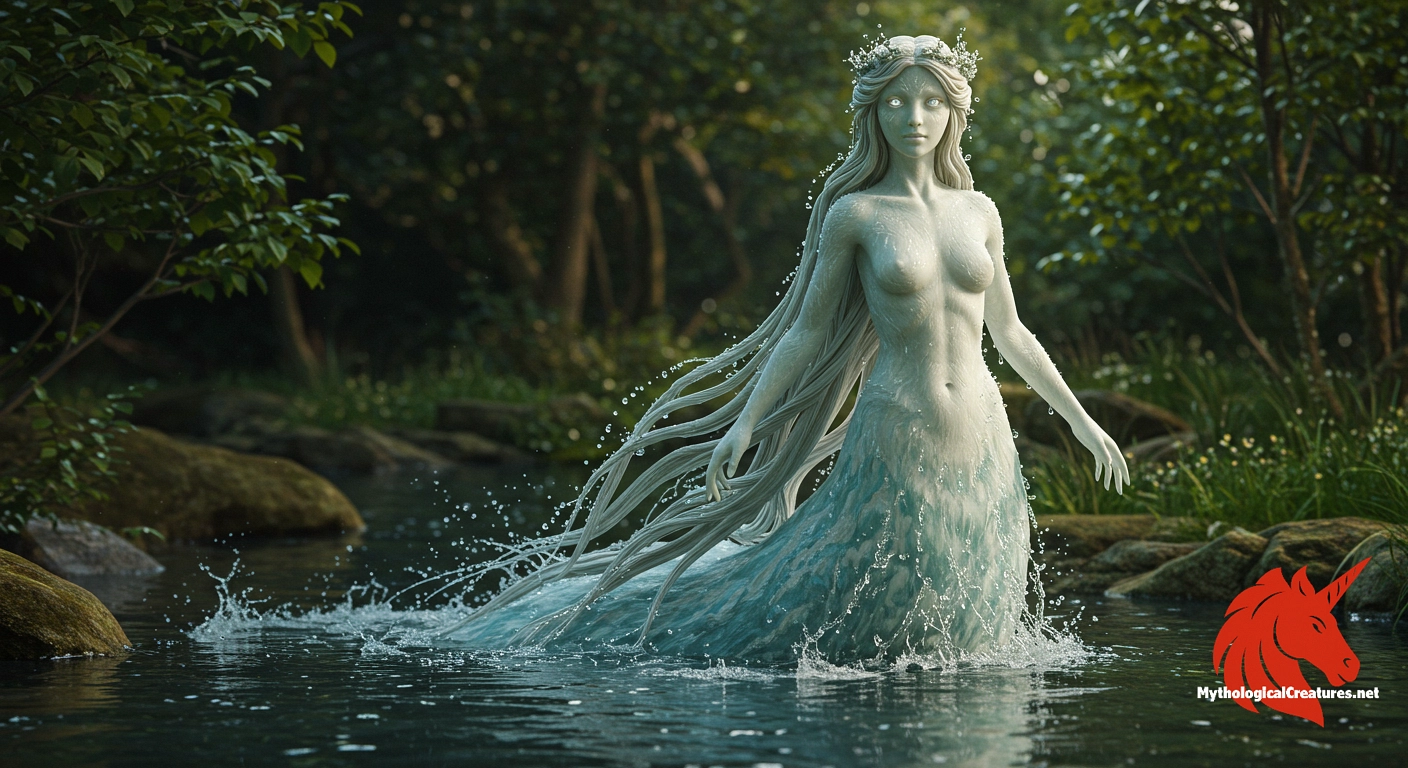Sequana: Sequana is a Celtic-origin goddess revered in Gallo-Roman religion as the divine personification of the river Seine.

Sequana
Sequana - Central figure in the worship of water and spring deities in ancient Gaul, representing the life-giving and healing powers of the Seine.
Origins & First Encounters
Sequana emerges as a captivating deity whose essence is entwined with the life-giving river Seine, symbolising the intimate bond between nature and divinity. Her roots lie deep within the ancient Celtic spiritual tradition, which celebrated natural elements as sacred manifestations of life. Over time, she was absorbed into the Gallo-Roman religious framework, allowing her divine attributes to resonate with a broader audience after the Roman conquest of Gaul. The river’s source, with its bubbling springs and pristine waters, was regarded as a sacred site where mortals and the divine communed. Ancient devotees constructed elaborate temple complexes in northern Burgundy at this very locus, affirming her significance within the regional pantheon. The discovery of over a thousand votive offerings underscores the fervour with which communities sought Sequana’s blessings. Her legendary character, embodying renewal and the perennial flow of life, bridged the local folklore of Celtic origins with the structured rituals of Roman worship. The goddess’s narrative encapsulates themes of regeneration, formulating a link between the natural environment and the spiritual realm. Even today, the enduring allure of Sequana inspires a sense of wonder towards the ancient traditions that celebrated the power of water.
Source Texts & Tale Variants
Archaeological evidence from the temple complex at the Seine’s source provides one of the richest insights into Sequana’s ancient cult. Numerous votive offerings and inscriptions have been unearthed, each serving as a tangible reminder of her revered status. These primary sources illuminate the rituals performed in her honour and the consequential role she played in local worship practices. Variants of her story, though not extensively recorded in literary texts, have been pieced together from fragmentary inscriptions and dedications found in the surrounding area. Some of these dedications hint at rituals that encompassed both healing and fertility, revealing a multifaceted persona. Localised accounts suggest that her divine intervention was believed to ensure both the safety of travellers and the prosperity of the land. The integration of Celtic and Roman religious motifs in surviving artefacts reflects the evolution of her worship over time. Even where literary references are sparse, the complexity of her iconography stands as testament to a vibrant and adaptable myth. These diverse sources collectively provide a window into the dynamic and regionally distinct ways in which Sequana was venerated.
Form & Powers
Artistic depictions of Sequana consistently capture a figure of graceful dynamism whose appearance mirrors the ceaseless flow of the river she embodies. Many representations feature long, flowing hair that cascades like the rippling water, evoking both movement and fluidity. She is often adorned in garments that blend the raw, organic aesthetics of Celtic tradition with the refined artistry of Roman influence. In several portrayals, natural elements such as water lilies, shells, and even serpentine motifs appear, symbolising renewal and the cyclical nature of existence. Her expressions, rendered with both gentleness and strength, suggest a being who is both nurturing and formidable. Variations found on coins and sculpted reliefs indicate that local artists occasionally emphasised the divine luminescence of her form, setting her apart from mortal figures. Some artefacts depict her surrounded by subtle hints of celestial light, as if she were an intermediary between the heavens and the earthly realm. The meticulous detail in these visual representations not only enhanced her mythical aura but also conveyed the sacred qualities attributed to her. This layered iconography invites viewers to contemplate the harmonious union of nature, spirituality, and art in ancient times.
Regional Faces
Across the diverse landscapes of ancient Gaul, the worship of Sequana assumed flavours unique to each locale while retaining a consistent reverence for her divine attributes. In northern Burgundy, her sanctuary at the source of the Seine was the fulcrum of a highly developed cult that celebrated her as the ultimate guardian of fresh water. In neighbouring communities, local adaptations saw her being woven into indigenous rituals that celebrated not only water but the cycles of growth and harvest. Some regional traditions emphasised her role as a healer, with local myths painting her as a mediator who purified the spirit as well as the body. The goddess’s attributes were sometimes intermingled with those of other water divinities, creating syncretic figures that resonated deeply with the local populace. Variations in her iconographic portrayal—from subtle differences in attire to unique symbols incorporated in local artefacts—underscore a mutable yet enduring divine essence. In areas where natural water sources were central to community life, her importance was further magnified through annual festivals and rites of passage. These regional adaptations demonstrate the flexibility of ancient religious practice and the way in which a singular deity could be reinterpreted to reflect local cultural identities. Thus, Sequana’s myth evolved in parallel with the communities that worshipped her, preserving a legacy that was as diverse as it was unified.
Cultural Parallels
The figure of Sequana invites fascinating comparisons with water deities from a variety of ancient traditions across Europe. Much like the British goddess Coventina, she embodies the nurturing and regenerative powers of fresh water, an element central to sustaining life. Similar to other river deities in Celtic and even Greco-Roman pantheons, the symbolism attributed to Sequana consistently revolves around themes of fertility, healing, and transformation. Her dual heritage, rooted in both Celtic mysticism and Roman ritual, mirrors the syncretic nature found in numerous local deities who bridged disparate cultural influences. The narrative of a water goddess, whose essence is interwoven with the flowing river, is a motif that recurs in many mythologies, underscoring the universal human connection to the natural world. In comparing her to rivals and counterparts in other traditions, one finds that regardless of regional variations, water consistently serves as a metaphor for life’s cyclical nature. Her iconography, often replete with symbols of renewal and protection, is reminiscent of other water goddesses whose images have been sanctified through local ritual practices. Such comparative analysis not only highlights shared human concerns about nature’s power but also stresses the unique regional expressions that make each deity distinct. Through these cultural parallels, Sequana’s legacy emerges as part of a broader tapestry of myth, where water unites a plethora of diverse spiritual traditions.
Legacy & Modern Evolution
Over the centuries, the cult of Sequana has undergone significant transformations, mirroring wider shifts in religious and cultural landscapes. In the waning days of ancient polytheism, her explicit worship diminished, yet her legacy endured within local folklore and the symbolic memory of the Seine. Throughout the medieval period, vestiges of her cult were interwoven with emerging local legends, ensuring that the essence of her divine influence was never completely lost. Modern archaeological discoveries have rekindled scholarly and public interest, casting new light upon the elaborate temple complexes and rich votive traditions dedicated to her. In recent times, artists and writers have revisited her myth, using Sequana as an emblem for the enduring relationship between humanity and the natural environment. Contemporary reinterpretations often invoke her image in talks of ecological renewal and the preciousness of natural water sources. Her iconography has been reinvented through modern media, films, and public art installations, continually adapting to new cultural narratives. These modern expressions underscore her transformation from a local goddess to a symbol of the timeless, life-sustaining power of water. In every new reinterpretation, Sequana’s legacy is celebrated as a bridge between ancient myth and contemporary environmental consciousness. Thus, her story remains a dynamic testament to the creative interplay between nature, culture, and the enduring human spirit.
Interesting Fact
The archaeological remains of Sequana's temple complex provide a rare glimpse into the syncretism between Celtic and Roman religious practices in ancient Gaul.
Quick Creature Info
Origin:
Features:
Associations:
Our Mythic Legendary Rating:

Habitat:
Supernatural Powers:
Physical Attributes:
Abilities:
Behavior:
Lore:
Related Creatures, Tales or Lore
- CCoventina
- BBoann
- SSulis Minerva
References
Discover Another Mythical Legend You May Not Have Heard Of?
Uncover the mysteries of ancient folklore and expand your knowledge of legendary beings from cultures around the world.
Dare to Meet the Minoan Genius....
Mythical Disclaimer: The images and data on this site are derived from various historical and literary sources, but we have found that many myths often have multiple versions and interpretations across references, sometimes contradictory. As a result, these creature depictions are artistic interpretations—imaginative blends of folklore, legend, and a dash of AI guesswork. Because creature descriptions vary widely, our illustrations and accompanying information represent our best effort to honor mythology while bridging creative gaps. Enjoy these interpretations—just remember, we've done our best to respect the stories and validate available data, but in the realm of mythology, details often shift, imagination leads the way, and nothing is ever set in stone!
Curated by the Mythological Creatures Team (rev. May 2025)
